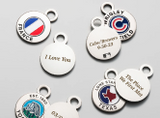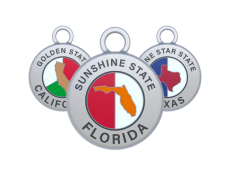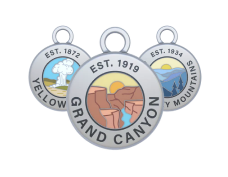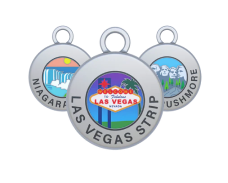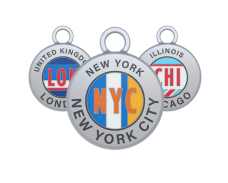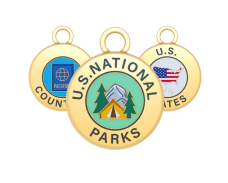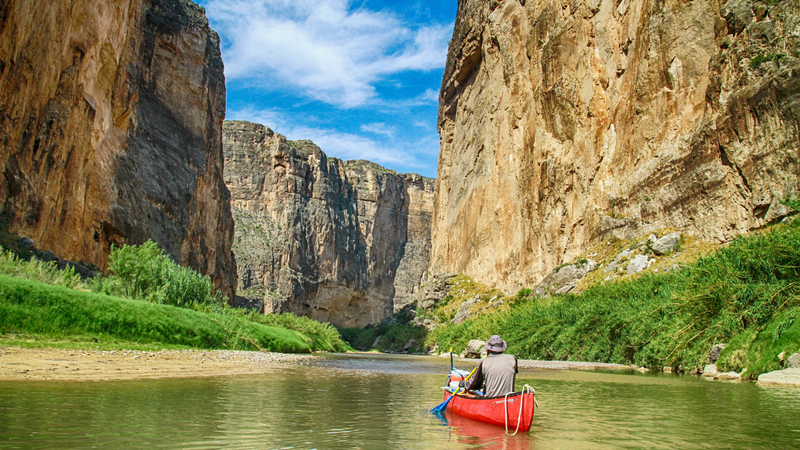
Key Takeaways:
- Big Bend’s Outdoor Appeal: Big Bend National Park offers diverse outdoor activities, from canyon hikes to river paddles, making it a prime destination for nature enthusiasts seeking adventure and tranquility.
- Best Times To Visit: Timing your visit can significantly enhance your experience, with fall and spring offering ideal temperatures for hiking and exploring, while summer requires careful planning to manage extreme heat.
- Preparation For A Safe Trip: Prepare thoroughly with ample water, sun protection, and navigation tools. The park's vastness and remote locations demand careful planning for a safe and rewarding adventure.
Big Bend is where vast desert landscapes meet rugged canyons and winding rivers, offering endless ways to connect with nature. Whether you want to hike dramatic trails, paddle the Rio Grande, stargaze under some of the darkest skies in the country, or simply sit in awe of the quiet, there’s something here for every traveler.
The Wander Club is built for travelers who want to hold onto the places that shaped them. Each handcrafted token and holder is designed to carry your memories wherever life takes you. With personalization, timeless design, and a mission to give back, every purchase helps turn adventures into something you can keep close, share with others, and treasure for years.
In this blog, we’ll examine the top outdoor adventures Big Bend has to offer, from hiking epic trails and paddling the Rio Grande to soaking in hot springs, spotting wildlife, and stargazing.
15 Outdoor Things To Do In Big Bend National Park
You’re standing in one of the most magical stretches of wilderness the United States offers, and it’s your turn to explore.
Here are fifteen unforgettable things to do outdoors that deserve a spot on your travel roster:
1. Hike The Lost Mine Trail
This iconic trail winds through juniper woodlands and rewards you with sweeping views of the Chisos Mountains. It’s a moderate climb, and each step brings fresh panoramas, perfect for snapshots and reflective pauses.
2. Paddle The Rio Grande
Set out in a kayak or canoe along the river that forms a natural border. Glide beside towering canyon walls, spotting herons or wild horses, feeling the calm of the current, or the thrill on lively stretches.
3. Catch A Sunset At Santa Elena Canyon
Few things rival the sun dipping behind 1,500-foot limestone cliffs. Make your way to the overlook before dusk for an awe-inspiring display of pink, gold, and purple hues.
4. Stargaze Under Pristine Skies
Big Bend is famous for some of the darkest night skies in the lower 48. Stretch out a blanket, let your eyes adjust, and watch the Milky Way shimmer undisturbed, a memory that lingers long after you leave.
5. Soak In The Hot Springs
Slip into natural pools along the Rio Grande where ancient mineral waters soothe tired feet. Early morning or evening, the combination of steamy water and open desert is pure bliss.
6. Tackle The South Rim Trail
For avid hikers, this challenging trek loops through high-country forests and reveals sweeping vistas over Mexico. Take your time; every mile yields new bursts of wildflowers or unexpected wildlife.
7. Explore Boquillas Canyon
Easily accessible, yet wild enough to feel remote. Walk the sandy trail and listen as the canyon amplifies every sound: a gentle river, your laughter, a far-off bird.
8. Watch Wildlife In The Chisos Basin
Rise early or linger at dusk to spot javelinas, roadrunners, or maybe even a black bear. The basin is a sanctuary for great and small creatures and a treat for those eager to observe.
9. Drive The Ross Maxwell Scenic Road
Wind through dramatic landscapes, from carved badlands to grassy plains. Stop at roadside pullouts for impromptu picnics and dramatic photo ops.
10. Scramble Up Balanced Rock
The Grapevine Hills Trail leads to this gravity-defying formation. Scramble up boulders and stand in the shadow of the iconic rock balanced between two pinnacles, a unique photo for your collection.
11. Attend A Ranger Program
Take advantage of ranger-led talks and hikes for deeper insight. Learn about the park’s geology, history, and ecosystem, and let a fresh perspective enrich your journey.
12. Birdwatch Along The Rio Grande Village
The park is a haven for birders; keep your binoculars ready at marshes and groves near the river. With luck, you’ll spot rare species like the vermilion flycatcher.
13. Cycle Old Maverick Road
Grab a mountain bike for this scenic, unpaved route through desert landscapes. Feel the dry wind, stop for hidden vistas, and savor the freedom of wide-open spaces.
14. Discover Fossil Discovery Exhibit
Step back in time as you wander through interpretive displays and life-size dinosaur replicas. It’s outdoor education at its finest, both for kids and adults.
15. Picnic At Rio Grande Village
Escape the midday sun with a shady picnic by the water. Unpack your lunch and listen to the symphony of birds, river currents, and the whisper of faraway adventure, ready and waiting for you.
When Is the Best Time To Visit Big Bend?
Big Bend National Park offers dramatically different experiences throughout the year, so timing your visit can completely transform the kind of adventure you have.
Here’s how each season shapes the park and what you can expect when you visit:
Spring In Full Bloom
Aim for late February through April if you favor warm days, cool nights, and the spectacular bloom of desert wildflowers. Spring transforms the Chihuahuan Desert: cactus flowers burst in neon pinks and oranges, and birdsong fills the crisp air. This is also the busiest season, so you’ll share the park’s famed vistas and winding trails with plenty of kindred explorers.
Summer Adventures With Precautions
Summer, stretching from May through September, brings both rewards and challenges. Hikers are greeted by longer days and fewer crowds, but the desert sun radiates intensity that can send temperatures soaring above 100°F. If you’re determined to visit in summer, plan to rise early, hike before midday, rest in shaded canyons, and stay hydrated as the desert heat climbs. Thunderstorms can sweep in during June and July, carving dramatic skies and filling draws with brief, rushing water.
Fall’s Golden Glow
Autumn, from October into mid-November, often glows with mild weather and golden Cottonwoods. Temperatures drop back into a sweet spot, perfect for relishing panoramic views from the South Rim or stargazing at night. Wildlife becomes more active again as the heat ebbs, and the crowds thin, gifting you a feeling of solitude on the trails.
Winter’s Quiet Beauty
Winter, from late November through January, reveals a quieter, contemplative side of Big Bend. Daytime temperatures are refreshingly cool, often in the 60s, but nights can get frosty, especially in the Chisos Mountains. Occasional snowfall dusts the peaks, adding an unexpected shimmer to desert shadows. Winter is prime for brisk hikes and empty trails, plus, there’s nothing like sipping hot cocoa as you watch the desert sunset under a quilt of stars.
Why Big Bend Is A Top Stargazing Destination
Big Bend National Park is as captivating at night as it is during the day. If planning your visit, consider saving energy for at least one evening under the park’s brilliant night sky. This is where the desert feels alive in a completely different way, inviting you to slow down and look up.
A Sky Free Of Light Pollution
Big Bend’s remote location makes it one of the darkest places in the continental United States. Without city lights, the Milky Way stretches across the sky in vivid detail, and constellations seem sharper, inviting you to trace ancient stories among the stars. The clarity is so intense that even faint satellites and shooting stars leave lasting impressions.
Ranger-Led Astronomy Programs
Park rangers often host astronomy nights, during which telescopes bring Saturn’s rings, distant galaxies, and even orbiting satellites into focus. These programs are perfect for families and first-timers, making the cosmos feel approachable and awe-inspiring. Hearing a ranger explain how light from some stars has traveled millions of years to reach you adds a humbling sense of perspective.
Moments Of Solitary Stargazing
Even without a guided program, stargazing here is easy. After a day on the trails, find a quiet spot, spread out a blanket, and let the desert silence heighten your senses. Shooting stars, meteor showers, and deep quiet turn each night into a personal memory. The longer you stay still, the more the sky seems to open up.
Best Spots For Night Viewing
Plan to spend an evening near Hot Springs Canyon Trail or the flats around Rio Grande Village, where wide horizons and open skies create perfect viewing conditions. These areas are ideal for photographers and anyone seeking uninterrupted views, offering the darkness that makes every constellation pop like a jeweled map overhead.
Where To Find The Best Hikes & Trails
Big Bend National Park offers something for every type of hiker, from casual strollers to seasoned adventurers. With over 150 miles of trails, this park delivers everything from mountain vistas to quiet desert solitude.
Below are some of the most rewarding trails you won’t want to miss:
Lost Mine Trail: A Chisos Classic
This 4.8-mile round-trip trek is a favorite for its mix of moderate challenge and incredible views. Each turn unveils more of the Chisos range, and the summit rewards you with sweeping panoramas. Set out early for cooler temperatures and spectacular morning light.
South Rim Trail: A Full-Day Adventure
At 12 to 14.5 miles, the South Rim Trail is a demanding but unforgettable experience. You’ll pass wildflower meadows, shaded forest patches, and end with one of the park’s most breathtaking overlooks, where Mexico spreads beyond the rim.
Santa Elena Canyon Trail: A Gorge Experience
For a shorter but dramatic hike, try this 1.7-mile round-trip trail. Towering limestone canyon walls and the tranquil Rio Grande create a natural amphitheater that feels worlds away. Wade into the river’s edge and let the moment sink in.
Window Trail: A Sunset Favorite
This 5.6-mile trail leads to a natural window framing the desert beyond. The notch glows brilliantly at sunset, turning the entire view into a living painting. It’s a perfect way to end a day in the park.
Tips For First-Time Visitors To Big Bend
Big Bend National Park offers vast beauty, but its size and remote setting can overwhelm newcomers.
These tips will help you prepare, stay safe, and enjoy every mile of your first visit:
- Plan For Rapidly Changing Weather: Big Bend’s climate can swing from chilly mornings to scorching afternoons, then back to cool evenings. Dress in moisture-wicking layers, pack a light fleece and windbreaker, and keep sun protection ready when shade disappears.
- Hydrate Early & Often: Water is your most important gear in the desert. Carry at least one gallon per person per day, refill whenever possible, and consider a hydration pack for convenient sipping on the go.
- Explore Multiple Ecosystems: To experience Big Bend’s diversity, plan stops in the mountains, desert, and river areas. Hike Lost Mine Trail or Santa Elena Canyon, then drive Ross Maxwell Scenic Drive for a sweeping overview of the park’s landscapes.
- Download & Carry Navigation Tools: Cell service is limited across the park. Download offline maps ahead of time or grab a paper map at a visitor center. Stop by a ranger station for advice and permits if heading off main trails.
- Practice Safety and leave No Trace. Rangers update trail conditions, wildlife sightings, and backcountry safety tips. Take advantage of their knowledge. Stay on marked paths, store food properly, and pack out everything to protect this delicate ecosystem.
- Slow Down & Observe: Big Bend rewards a slower pace. Watch how light changes on the cliffs, listen for canyon wrens, and stay after dark for incredible stargazing. These moments will become your most vivid memories.
With a bit of preparation, your first trip to Big Bend can be unforgettable. Treat each trail, overlook, and starry sky as an invitation to connect deeply with this remarkable desert park.
Final Thoughts
At The Wander Club, you celebrate your journey by collecting a National Park token engraved for Big Bend, then adding it to a leather Wanderchain Token Holder, necklace, or bracelet crafted to last as long as your memories. Personalize the piece, gift it to your favorite trail buddy, or start a growing tradition with every park you explore.
So, before you point the compass home, lock in the moments that made Big Bend unforgettable. Collect your travels, change the world, and carry that desert sunrise wherever you roam.
Read also:
- Yellowstone Travel Guide: Must-See Attractions And Experiences
- Unforgettable Things To Do In Joshua Tree National Park
-
12 Van Life Must Haves for a Smooth Road Trip
Frequently Asked Questions About Things To Do In Big Bend National Park
When is the best time of year to visit Big Bend?
Fall and spring bring ideal temperatures, colorful blooms, and crisp nights perfect for hiking and photography. Winter offers quiet trails and clear skies, while summer demands early starts, hydration, and heat-aware planning for safe adventures.
Are there guided tours available?
Guided tours range from river floats through canyons to ranger-led geology talks and stargazing events. Outfitters handle logistics, ensuring safe, immersive experiences. Booking early is recommended, especially in spring and fall when demand is highest.
What is the top hiking trail in Big Bend?
The South Rim in the Chisos Mountains is the park’s crown jewel, delivering sweeping views after a challenging trek. For shorter options, Lost Mine Trail or Santa Elena Canyon provides dramatic scenery and easier access.
Can you go camping inside the park?
Yes, with developed campgrounds like Chisos Basin and Rio Grande Village, or roadside/backcountry sites for more solitude. Reservations are essential in peak seasons, and proper food storage and water planning are critical for safety.
Do you need a permit for backpacking?
Permits are required for all backcountry camping, including primitive roadside sites. Secure yours at a visitor center, follow Leave No Trace practices, carry water, and prepare for temperature swings and potential wildlife encounters.
